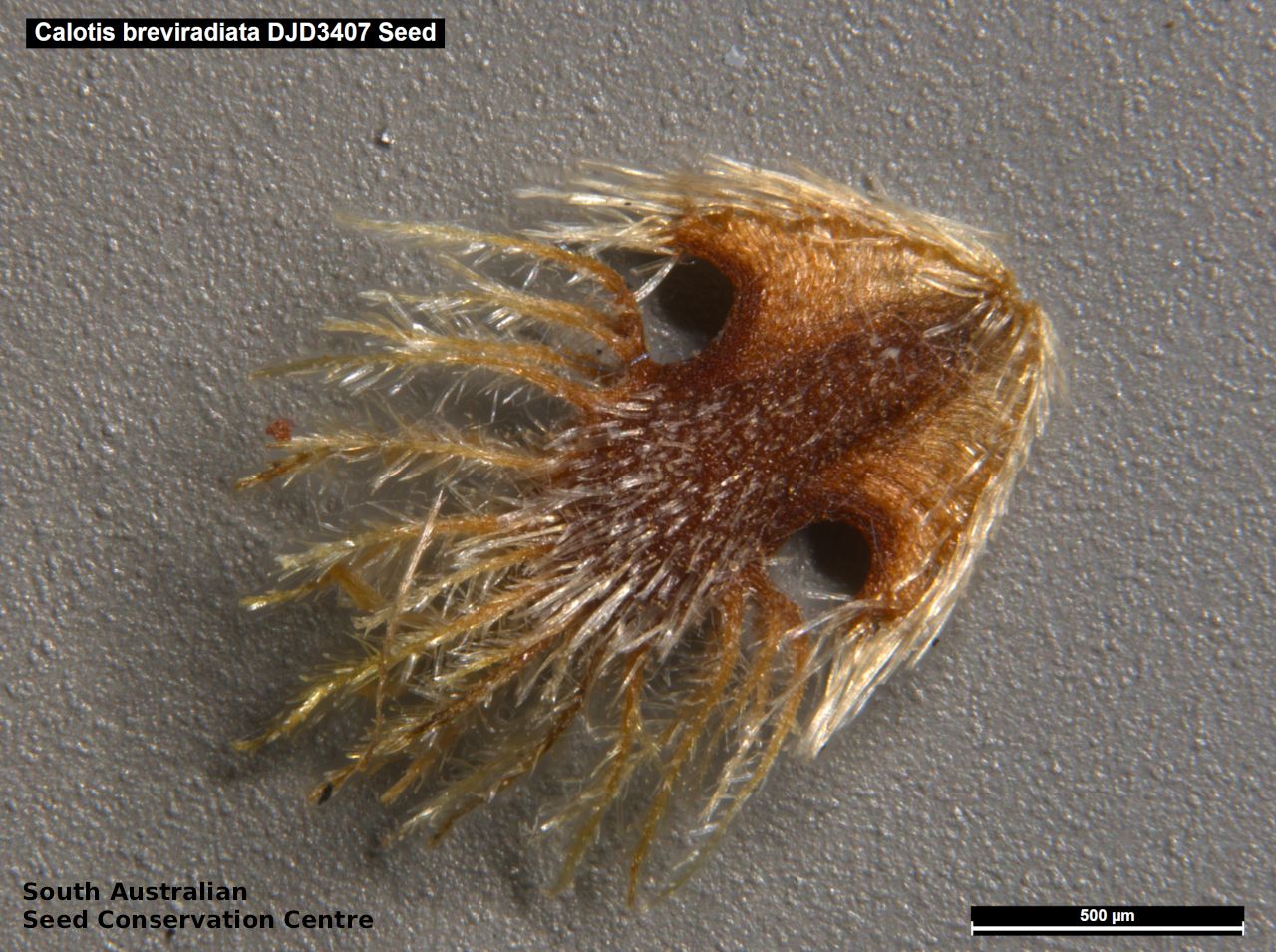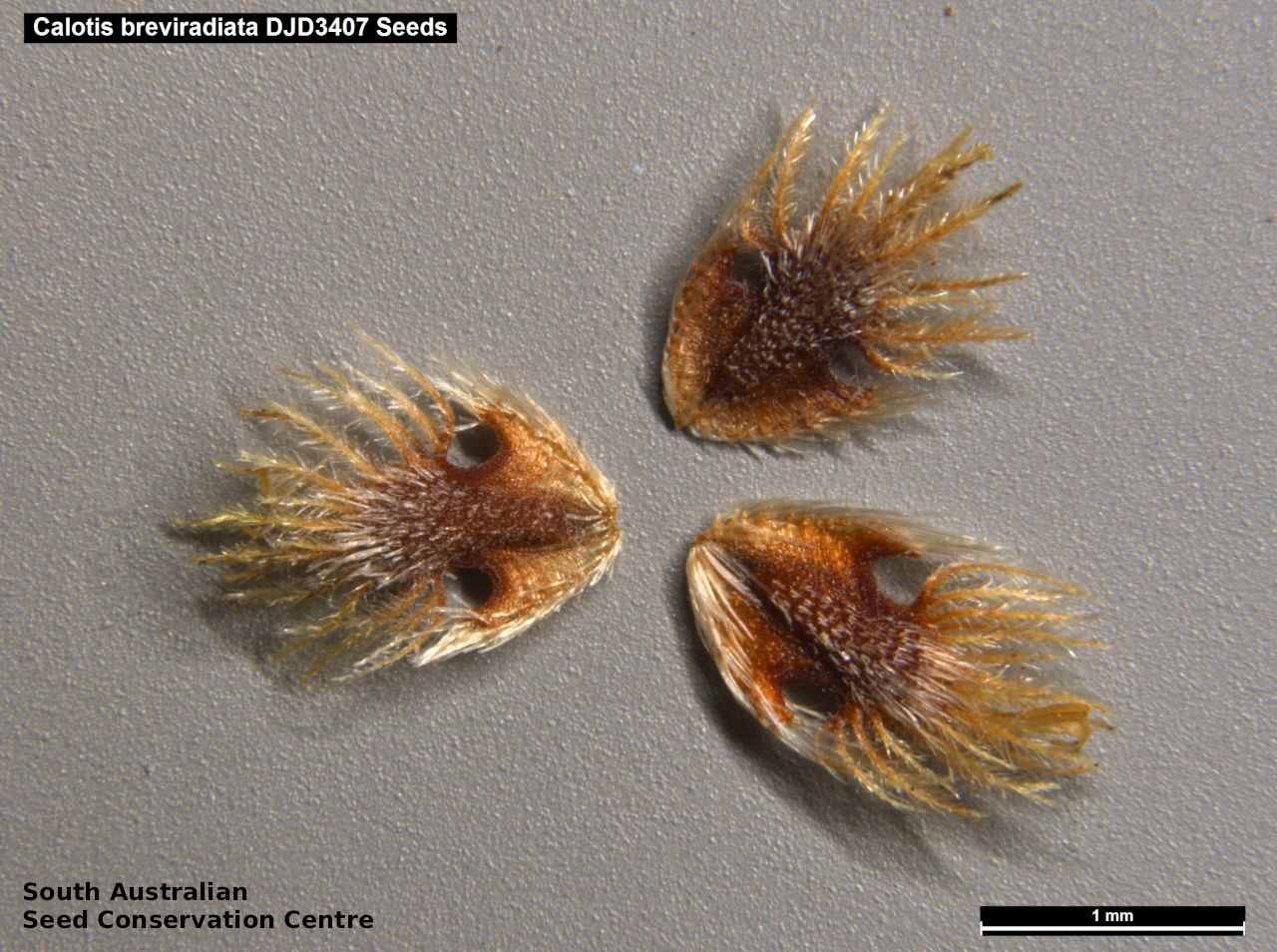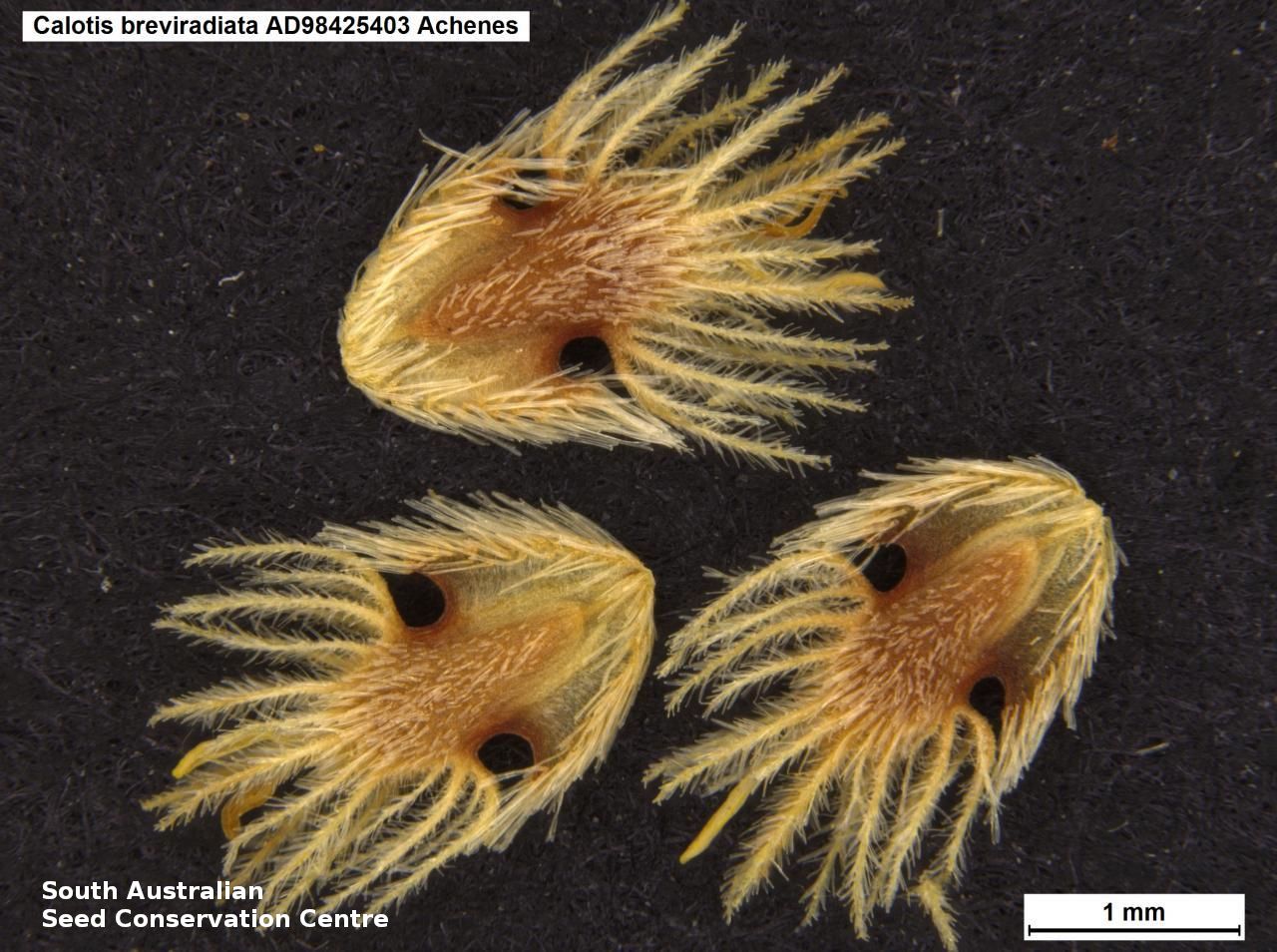




Prior names
Calotis multicaulis var. breviradiata
Etymology
Calotis from the Greek 'kalos' meaning beautiful and 'otos' meaning ear, after the first species named in the genus, Calotis cuneifolia which has an ear-shaped pappus. Breviradiata from 'brevi' meaning short and 'radiatus' meaning spreading rays.
Distribution and status
Found in the south-west part of South Australia, north of the Nullarbor growing in dry water courses and claypans. Also found in Western Australia. Native. Uncommon in South Australia. Common in Western Australia.
Herbarium region: Nullarbor
NRM region: Alinytjara Wilurara
AVH map: SA distribution map (external link)
Plant description
Perennial herb to 40 cm high with erect or ascending stems and branches sparsely pubescent, often becoming woody at the base. Leaves sessile, cuneate to oblanceolate to 3 cm long and 4 mm wide; 1-5-toothed near the apex, narrowed at the base; sparsely pubescent. Flower-head solitary or in loose terminal cymes of 2-4 yellow daisy-flowers. Flowering between July and September. Fruits are round spiny fruit-head. Seeds are orange-brown archor-shaped seed to 3 mm long, with hairy winged margin at one end and spiny hairs at the other. Seed embryo type is spathulate fully developed.
Seed collection and propagation
Collect seeds between September and November. Collect mature seed heads that are dried and turning brown by picking off the heads and placing them in a paper bag. Be careful as the heads are spiny. Leave the heads in the paper bag to dry for at least a week. No further cleaning required if only the heads are collected. If other material were collected, use a sieve to separate the unwanted material. Whole heads can be stored with a desiccant such as dried silica beads or dry rice, in an air tight container in a cool and dry place. Seeds are non-dormant, viable seed should germinate readily.
| Location | No. of seeds (weight grams) | Number of plants | Date collected | Collection number Collection location | Date stored | % Viability | Storage temperature |
|---|---|---|---|---|---|---|---|
| BGA MSB | 41,000 (9.86 g) 41,000 (9.86 g) | 100+ | 7-Sep-2016 | DJD3407 Nullarbor | 1-Nov-2017 | 100% | -18°C |
Number of plants: This is the number of plants from which the seeds were collected.
Collection location: The Herbarium of South Australia's region name.
% Viability: Percentage of filled healthy seeds determined by a cut test or x-ray.